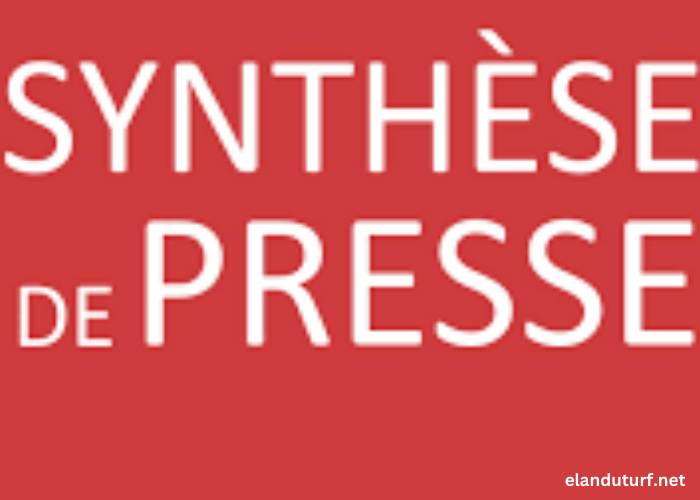In an ever-evolving world of information, the Synthèse DE LA Presse plays a crucial role in summarizing and analyzing the various news outlets, reports, and trends emerging globally. This practice helps professionals, academics, and even general readers stay informed by consolidating important news from multiple sources into a comprehensive overview.
But what exactly is a Synthèse DE LA Presse, and how does it shape our understanding of current affairs? In this blog post, we will dive deep into this term and examine its significance in today’s fast-paced media environment.
How Has the Concept of Synthèse DE LA Presse Evolved Over Time?
Historically, the Synthèse DE LA Presse has been a valuable tool for professionals, politicians, and decision-makers. In its earliest forms, it was simply a summary of articles that covered political, economic, and social events, providing individuals with an overview of the latest happenings.
As the world became more digital, this concept evolved, adapting to include a wider array of media platforms, such as online news sites, social media, and digital publications. Today, the Synthèse DE LA Presse is a blend of traditional journalism and modern digital reporting.
The importance of this evolution lies in how information is curated. In a time when misinformation and fake news can spread quickly, the Synthèse DE LA Presse helps sift through and verify legitimate reports, offering a trusted resource for those seeking accurate news. With the advancement of digital tools and AI, this practice has become more efficient, enabling real-time updates and more in-depth analysis of global events.
What Are the Main Components of a Synthèse DE LA Presse?
A Synthèse DE LA Presse is composed of several key components that ensure it is comprehensive and informative. First, it includes a detailed summary of the most significant events covered in the press, whether local, national, or international. These summaries are often categorized by theme, such as politics, business, health, or culture, which makes it easier for readers to focus on specific areas of interest.
Second, the analysis goes beyond merely recounting events. The Synthèse DE LA Presse critically examines how different media outlets present information, identifying biases, highlighting contradictions, and drawing attention to overlooked facts. It often includes expert opinions or data-driven insights to provide context and depth.
Lastly, the Synthèse DE LA Presse usually incorporates a comparative study of how the same event is covered in different regions or countries, allowing readers to understand diverse perspectives. This comparison is essential for those involved in international relations, global trade, or any sector that requires knowledge of how news is perceived around the world.
Why Is the Synthèse DE LA Presse Important in Today’s Information Age?
In an age where vast amounts of information are available at our fingertips, the Synthèse DE LA Presse serves as an essential filter, helping people stay informed without getting overwhelmed. The rise of digital media has led to an information overload, with countless stories being published every minute. A Synthèse DE LA Presse acts as a gatekeeper, selecting only the most pertinent stories and presenting them in a clear and organized manner.
Moreover, with increasing concerns about the credibility of sources, a Synthèse DE LA Presse helps in identifying reputable reporting by showcasing trends in how reputable news organizations cover certain topics. It highlights the contrast between sensationalist journalism and reliable news, thereby aiding readers in making informed decisions about the information they consume.
How Do Media Biases Affect a Synthèse DE LA Presse?
Media bias is an unavoidable element in journalism, and its impact on the Synthèse DE LA Presse can be significant. Different media outlets often have varying editorial lines, political leanings, or financial interests that can color the way they report the news. For example, a conservative news outlet might focus on different aspects of a political story than a liberal one, and these differences in reporting can shape public opinion in contrasting ways.
In a Synthèse DE LA Presse, understanding these biases is key to providing an accurate and objective overview. The goal is not only to summarize the stories but also to analyze how different outlets frame the same events. For instance, a news story on climate change might be presented as a global crisis in one publication, while another might downplay its importance. A robust Synthèse DE LA Presse will highlight these differences, giving readers a more nuanced understanding of the topic.
Can Artificial Intelligence Enhance the Accuracy of a Synthèse DE LA Presse?
Artificial intelligence (AI) is revolutionizing many industries, and media analysis is no exception. AI can quickly process large volumes of news articles, filter out irrelevant information, and identify important trends across multiple platforms. In the case of the Synthèse DE LA Presse, AI can enhance accuracy by ensuring that no significant detail is missed, and it can help flag potential biases by analyzing the language and tone used in different reports.
AI also allows for more personalized content. Users can set parameters based on their preferences, and the AI can deliver a Synthèse DE LA Presse tailored to specific interests. For example, if someone is interested in global economic trends, the AI can focus more on articles covering that topic. This technology ensures that the Synthèse DE LA Presse remains relevant in an age where customization and speed are paramount.
How Is a Synthèse DE LA Presse Different from a News Summary?
While both a Synthèse DE LA Presse and a news summary aim to condense information, the two serve distinct purposes. A news summary is generally a straightforward recounting of events, providing readers with the essential facts without much interpretation or analysis. On the other hand, a Synthèse DE LA Presse not only summarizes but also critiques the coverage, offering a deeper understanding of the media landscape.
For example, a news summary on an election might list the results and a few key reactions. However, a Synthèse DE LA Presse will delve into how various media outlets covered the election, which issues were emphasized or ignored, and how different countries or political factions interpreted the results. This level of insight is what makes the Synthèse DE LA Presse so valuable for professionals who need to understand not just what happened, but how it was perceived.
How Can Professionals Use a Synthèse DE LA Presse in Their Work?
For professionals in fields such as politics, business, or law, the Synthèse DE LA Presse is an invaluable tool. In politics, it helps lawmakers and diplomats stay informed about how their policies are being reported both at home and abroad. Business leaders use it to gauge market trends, understand regulatory changes, and stay ahead of competitors. Lawyers and legal professionals may rely on it to track high-profile cases and public opinion, which can influence the legal process.
By consolidating information from various sources, the Synthèse DE LA Presse saves professionals time while providing them with a comprehensive understanding of the issues that matter to their industries. For example, during a financial crisis, a business leader might use a Synthèse DE LA Presse to monitor news about government interventions, market reactions, and consumer sentiment, enabling them to make better-informed decisions.
What Is the Future of the Synthèse DE LA Presse?
As technology continues to advance, the future of the Synthèse DE LA Presse looks bright. AI and machine learning will likely play a more significant role, making the process faster and more accurate. Additionally, with the rise of multimedia journalism, future Synthèse DE LA Presse reports could incorporate not just written articles but also video content, podcasts, and social media analysis.
Another trend is the growing importance of regional press syntheses. As globalization increases, so does the need for understanding local perspectives on international issues. A Synthèse DE LA Presse focused on a specific region can provide insights that are often overlooked by global media, offering a more holistic view of global events.
Conclusion
In conclusion, the Synthèse DE LA Presse remains an essential tool for navigating today’s complex media environment. As the world becomes more interconnected and information more abundant, the need for a structured and reliable way to digest news is critical. Whether through traditional methods or advanced AI technologies, the Synthèse DE LA Presse will continue to evolve, ensuring that readers can access comprehensive, accurate, and insightful summaries of the most important stories shaping the world today.
This process allows individuals, especially professionals, to make informed decisions based on a balanced understanding of current events. As the media landscape continues to change, so too will the methods we use to understand it, but the Synthèse DE LA Presse will always remain a vital resource.




